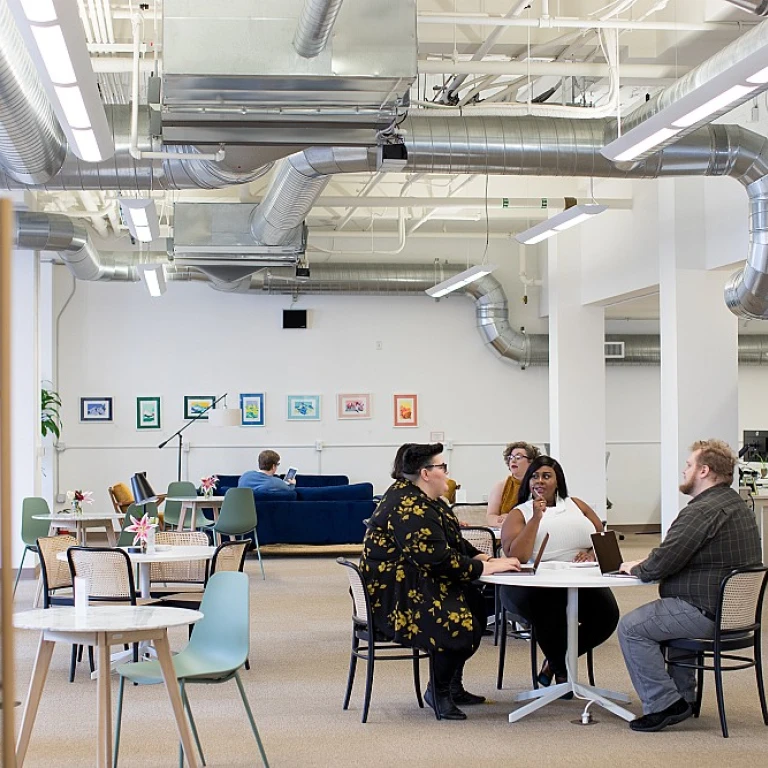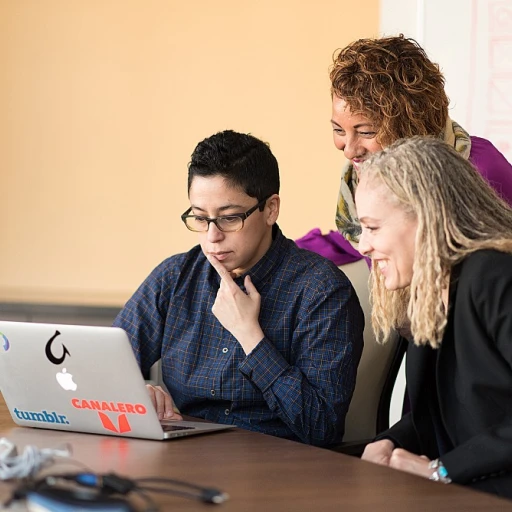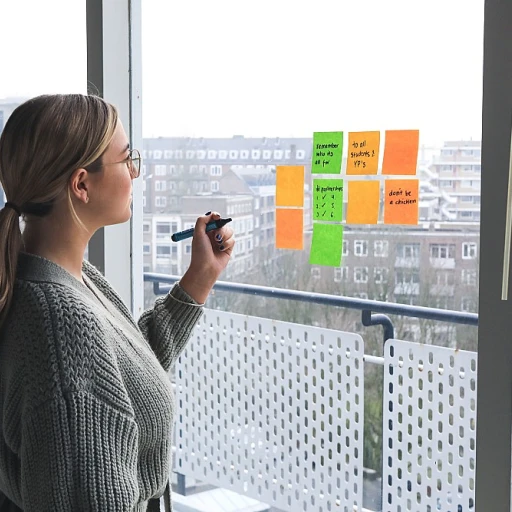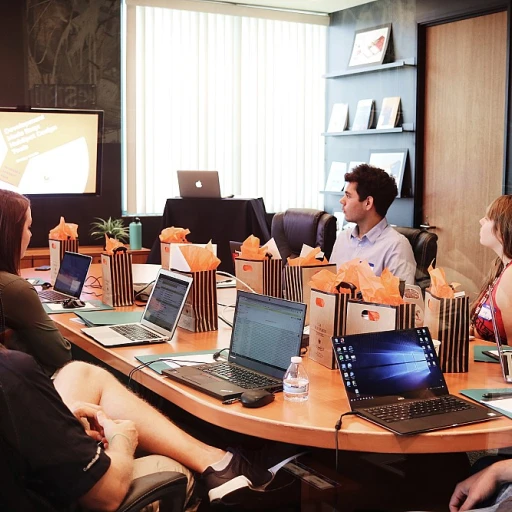Understanding the Essence of Organizational Culture
Exploring the Core of Organizational Culture
In the ever-evolving landscape of the Arabian Emirates, understanding the intricacies of organizational culture is fundamental for any company aiming to achieve long-term success. This essence remains at the heart of every organization, shaping the overall balance between structure and flexibility. At its core, organizational culture is a complex tapestry woven from the shared values, beliefs, and norms that influence how employees interact, carry out their work, and align with the company's mission.
Leaders play a pivotal role in sculpting this culture, ensuring that it not only resonates with the organization's purpose but also propels the company forward. When leaders and members have a deeply ingrained understanding of current and ideal cultural dynamics, it leads to improved performance and employee engagement.
A culture inventory or culture assessment becomes crucial in this endeavor, as it provides a clear picture of the existing and preferred cultural attributes. It allows companies to strategically plan for culture change that aligns with their business objectives. Human synergistics, often utilized in these culture surveys, provides valuable insights into the competing values within organizations, helping devise strategies to bridge the gap between the current and the ideal culture.
Furthermore, fostering a strong corporate culture creates an environment where team members feel valued and motivated, ultimately enhancing overall organizational performance. This understanding sets the foundation for effective leadership and a thriving business environment in the Arabian Emirates and beyond.
The Role of Office Managers in Shaping Culture
Championing Company Values
Office managers are in a unique position where they can significantly influence the organizational culture. Their role is not just about managing operations, but also about bringing to life the core values of the company. By doing so, they facilitate a culture change that aligns with both employee engagement and the company purpose. Leadership from office managers can bridge the gap between the current culture and the ideal company culture that supports business performance and sustainability.
Effective Culture Assessments
Understanding the organizational culture is pivotal for office managers. Through a culture inventory, specifically using tools like the organizational culture inventory (OCI), managers can assess both the current culture and the preferred culture. This assessment offers insights into existing values and the changes necessary to achieve the desired outcome. Managers can use this data to encourage organizational transformation that resonates with the purpose and goals of the organization.
People-Centric Leadership
Office managers who excel in culture building prioritize people-centric leadership. By fostering a sense of community, they ensure that all team members feel valued, ultimately driving a sense of belonging among employees. This kind of leadership cultivates a supportive workspace, enhancing the overall organizational culture. Top-tier managers understand that when employees are aligned with the company's objectives and values, they contribute to an environment conducive to long-term success.
Tools for Change
Being an effective office manager also involves utilizing the right tools and strategies to bring about culture change. Investing in regular culture surveys can provide ongoing feedback and reveal the dynamics at play within the organization. When managers respond to this feedback, they demonstrate a commitment to continuous improvement and adaptation, fostering trust and loyalty among members of the company. To infuse an element of fun and lighten the atmosphere, managers can explore using humor as a tool in everyday interactions, as highlighted in this insightful exploration of humor in office supplies.
Challenges Faced by Office Managers in the Arabian Emirates
Addressing Obstacles in the Workplace
In the Arabian Emirates, office managers are tasked with the critical responsibility of incorporating effective organizational culture into their workplaces. The unique cultural landscape in this region presents a set of challenges that can potentially hinder the development and maintenance of an ideal culture.
One of the primary challenges is balancing the deep-rooted traditional values with modern corporate culture. This requires understanding how to align the organization’s purpose with cultural insights to create an engaging work environment that caters to both local and global perspectives. Administrators often have to navigate between maintaining the company's core values while fostering a more inclusive and sustainable corporate culture that is conducive to employee engagement and long-term performance.
Effective communication also poses a significant challenge. With diverse teams, ensuring that all members are aligned with the organization’s culture and vision can be complex. Language barriers and differing cultural backgrounds may further complicate these efforts. This necessitates strategic communication and leadership skills to bridge gaps in understanding and bring about desired culture change.
Furthermore, establishing a comprehensive culture inventory and assessment can be challenging. Office managers need to conduct thorough culture surveys and utilize tools such as the Organizational Culture Inventory (OCI) to identify the current culture and compare it with the ideal culture. This enables businesses to recognize areas needing improvement and leverage leaders’ competencies to foster a culture change aligned with organizational goals.
Another hurdle is the resistance to change often observed among employees and leaders alike. Overcoming this resistance requires transparency, gradual implementation of changes, and demonstrating the tangible benefits of a culture shift to all stakeholders involved. For further insights into strategic approaches that can enhance office efficiencies, consider exploring our detailed discussion on enhancing efficiency with a strategic approach.
Implementing an Effective Organizational Culture Inventory
Conducting a Thorough Culture Assessment
The implementation of an effective organizational culture inventory (OCI) stands as a pivotal step for companies in the Arabian Emirates aiming to enhance workplace dynamics. Understanding the essence of organizational culture, as detailed earlier, requires a structured approach, and an OCI acts as a roadmap for identifying both current and ideal cultural values within an organization. A methodical culture assessment involves several key processes:- Conducting a comprehensive culture survey among employees to gather insights into their perceptions and experiences with the existing corporate culture.
- Assessing the competing values framework to identify discrepancies between the current culture and the preferred culture of the organization’s members.
- Engaging in discussions with business leaders to understand the long-term company purpose and align it with cultural objectives.
Utilizing OCI for Leadership and Performance Enhancement
The data obtained from a culture inventory provides invaluable information for enhancing leadership and performance within the organization. By identifying areas needing change, office managers can work with leaders to facilitate a culture change that promotes employee engagement and teamwork. Furthermore, an effectively implemented OCI serves the purpose of:- Fostering a culture organization that aligns with the company culture and supports the long-term goals of the business.
- Assisting in the transformation from a current culture to an ideal culture, thereby establishing a conducive environment for all organization members.
- Enhancing trust among employees by involving them in the culture assessment process, thus ensuring their values are reflected in the organizational culture.
Case Studies: Success Stories from the Arabian Emirates
Success Narratives from the Arabian Emirates: Learning from Effective Practices
In the Arabian Emirates, the role of organizational culture in enhancing workplace dynamics cannot be overstated. Companies have increasingly recognized that an effective culture inventory, or OCI, is pivotal in driving organizational change. By assessing their current culture against an ideal culture, these organizations have managed to align their company purpose with long-term objectives.
One of the prime examples of cultural transformation can be seen in a leading company that prioritized employee engagement and leadership development. This organization used a comprehensive culture assessment to understand their current culture and aspired towards a corporate culture that emphasized people-centric values.
Leaders within this company were instrumental in this cultural rebirth. They fostered an environment where team members felt valued and empowered. Through consistent culture surveys, they monitored progress and made necessary adjustments to maintain momentum toward their preferred culture.
| Key Strategies Implemented | Outcomes |
|---|---|
| Regular Cultural Surveys | Increased employee satisfaction and engagement |
| Values-Driven Leadership Programs | Improved overall performance and innovation |
| Enhanced Communication Channels | Strengthened collaboration across teams |
Another success story involves an organization in the financial sector. Here, leaders implemented competing values frameworks to identify gaps between their current and ideal cultures. By focusing on both the purpose and behavior aligned with organizational values, they achieved remarkable culture change.
These case studies offer a roadmap for other businesses in the region striving to refine their culture organization and improve team dynamics. As these examples illustrate, a thoughtfully crafted organization culture can transform a company's trajectory, enhancing its long-term sustainability and performance.













